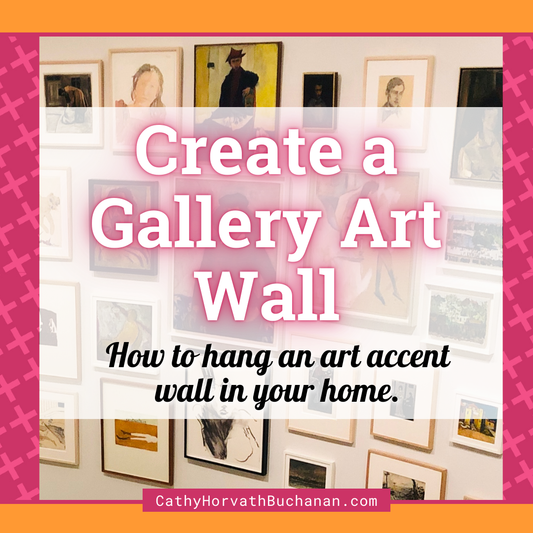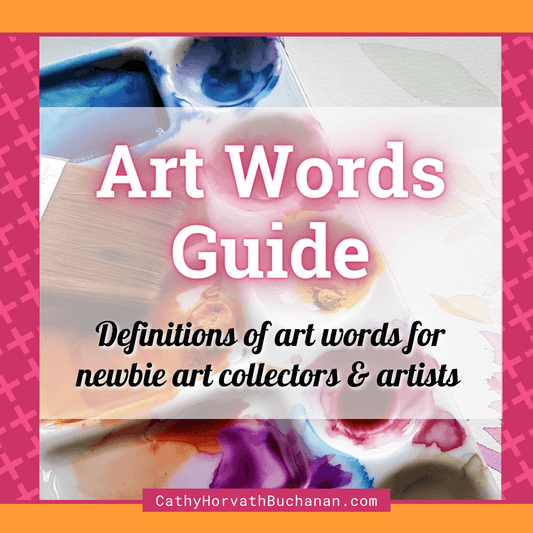
Buying art on a budget?
You know you'd like to have some art, what's next?
The first post in this series was centered around 'Why' you should have art (link below).
Home Art Decor - The simple truth is art can make you happier
The next question you’ll probably have is how can you get art that you love at a price you can afford? The following article will give you an idea about what goes into the price of a work of art.

Don't feel intimidated, it's only art...
No doubt at some point, you’ve probably read a hi-brow article from someplace like architectural digest interviewing an investment banker in the process of amassing a large expensive collection of modern, perplexing art. When the average person is considering buying art, magazine articles such as these can be pretty intimidating.

Take heart, acquiring art for your home isn’t rocket science. The art you buy doesn’t have to be expensive and it doesn’t even have to be an original or a painting. Viable alternatives can be sketches or perhaps art prints, both are a very affordable ways to have art in every room without breaking the bank.
First you need to figure out what size and type of art you are interested in...
Think about what type of art you're interested in acquiring, is a wall piece or a sculpture, is it for indoors or outdoors?
When shopping be sure to keep in mind the location where you’ll be putting your artwork, as this will dictate the size(s) you will be looking for.
Do you have a specific location picked out in your home, cottage or office, for that special piece? Is the location size-specific, like over a sofa or mantle, or on a large blank wall? Since a small painting wouldn’t be appropriate for those locations a larger budget needs to be allocated to fulfill the scope of the project. If you don’t currently have the funds for a large painting then perhaps you’ll need to rethink the location for the artwork.
There are a few ways to work around the size issue. One option would be to hang a collection of smaller works to take up the large space. Another way is to frame an artwork so that it appears larger by adding wide mats and a thick frame. If those methods don’t suit you, a cozy nook is also a great place for a smaller piece where it can be enjoyed on a more intimate scale.
Art on a budget...
Next step is to find art that fits within your budget
Your budget is an important factor as it may limit what’s possible. Make sure that you’ve allocated enough budget will cover all your expectations including extras such as shipping, tax and framing.
Are you trying to buy one large artwork, in which case you’ll spend a bit more but in a lump sum, or would you like to build a collection wall showcasing many smaller art pieces. Several small artworks is a great option especially if you’re just beginning to collect wall art, as you can take a bit of time saving in between purchases and with some clever framing make the most of each piece.
When setting a budget know that if you fall in love a particular piece of art it may go a bit beyond your budget. I suggest that you listen to your gut on this one. You’d hate to let that piece get sold out from under you and then regret that you didn’t spend a bit more to acquire it.
This happened with one of my paintings, the gallery owner had moved some pieces around and a woman who’d delayed buying one of my paintings thought she’d missed the boat...until she realized that the piece had just been moved to another room. Recognizing that her sense of disappointment was a barometer of how much she loved the piece, she bought the painting immediately. This is definitely a cautionary tale, especially when it comes to original art, there’s only one, you get it, or you don’t.
What’s affects the price of art?
There are many things that an artist has to consider when pricing artwork. Time and materials of course, but there's many other expenses that an artist has to cover to keep their studio going in order to continue making art.
Being an artist as a full time occupation is the equivalent of being a small business owner, with all the same concerns and expenses in order to keep the lights on and the family fed. The time an artist spends making the actual piece of artwork that you buy is only a small piece of the whole, in regards to the time an artist has spent on letting you know about the artwork, and then getting that artwork to you.
In the graphic below I also point out that creating art is monumental effort in creativity and confidence. Included in the price are the many years the artist has spent experimenting to honed their craft, the emotional battle of overcome feelings of doubt and self questioning about themselves and the value of what they are creating, and then finally parting with their coveted creation.
How do you put a dollar value on that?? Know that whatever the price the artist has put on the original piece is probably too low. Below is an example of how a breakdown might look, but every artist has their own pricing structure.
All this being said when you are about to purchase an work of art that an artist has toiled over, whatever you do PLEASE DON'T ASK FOR A DISCOUNT ON ORIGINAL ART!!!

Others pricing factors...
The stage the artist is in their career affects pricing, (emerging, mid-career, or established). New artists or hobbyists who have not yet developed a unique style and honed their skills will fetch lower prices. While an experienced highly skilled artist who has been selling art for years with a well developed style and proven market value for their work.
Some factors that can also determine price of art are rarity and medium. Is it an original one of a kind art piece or are there many available?
An original painting on canvas is probably the most valuable, followed by sketches, then hand pulled prints (for example linocuts or intaglio prints).

For mass produced art prints the print run size will affect the price. Is it part of limited run (for example only 500 will ever be made) which would make it worth more, or is it an open edition (meaning an unlimited number can be made).
Of course the more rare an item is the higher the price will be.
Where you buy and art piece can also be reflected in the pricing. When buying through a gallery or third party, there are always fees added on top of the artwork’s initial price. You might be surprised to learn that most galleries charge at least 50% (or more) on top of the price the artist actually gets.
Online market venues also charge a premium for selling art, usually in the form of a fee to the artist, which as with most businesses usually gets passed on to the buyer.
Shipping costs...
Be sure you know any additional costs associated with buying an artwork including shipping, insurance and any duties and taxes. Most of these depend on where you live and where the art is being shipped from and by which method. For example larger paintings may be shipped rolled (for pricing and safety issues) and then need to be re-assembled. In this case a professional framer would need to be budgeted for in order to do the stretching.

How to save on the price of an art piece
One way to save a bit of money is to buy direct from the artist’s website or in person at an art show or in the artist’s studio as you may be able to avoid some of those extra fees charged by galleries or online marketplace platforms.
Another sensible way to save money on artwork is in the framing. It’s much wiser to spend your budget on the actual artwork, you can usually find a cheaper way to frame something.
You might think it would be great to have the artwork come pre-framed but wait, there’s more to it. Framing options will be limited to what the artist has available in studio and that may not match your decor or taste. The artist will also need to charge extra for a framed piece, plus if you're buying from an online venue shipping the artwork to you framed will add to the shipping cost. (also frames with glass are difficult to ship as couriers don’t tend to insure shipments that contain glass).
You can DIY a frame, or get a second hand frame then repainted it, a la shabby chic. You can always get your art piece re-framed professionally when you can afford it some time in the future.

If you go to your local professional framer, you’ll have much more control over the price and style of the frame. You’ll also be able to get their advice on what would look best with painting. Framing is a specialty in its own right. You took the effort to get a special artwork why not indulge in a special frame too!
Conclusion
If you have a good sized budget the world is your oyster, a large original painting will be in your sights. If you have limited means you still deserve to be surrounded by beauty, in which case collecting art prints is an excellent way to have something wonderful and still feel like you didn't break the bank.
Regardless of how much you spend on your art, know that bringing artwork into your home will add value to your life everyday. When you first purchase the artwork this value is monetary, measured in dollars and cents. As you live with the work you'll find the value soon transcends the initial cash outlay to become something greater, the value of joy and delight that it brings to you, and to everyone in your home!
Where to find the art you want…..
Once you know the type of art you want and budget, the next step is to find out where you can get it either online or locally. I have a blog post that covers all that just click on the link below...







